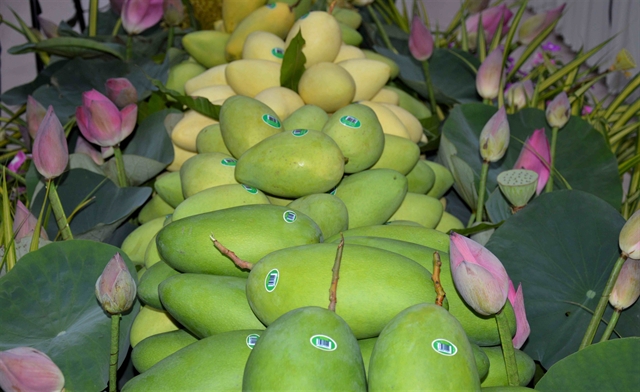 Economy
Economy

 |
| Việt Nam’s fruit and vegetable export turnover reached a new record high of US$5.6 billion last year. — VNA/VNS Photo Nhựt An |
HCM CITY — The Asian markets, particularly Southeast Asia and the Middle East, continue to offer significant opportunities for Vietnamese vegetable and fruit exports, experts told a forum in HCM City on Wednesday.
Lê Thị Mai Anh from the Ministry of Industry and Trade’s Asia-Pacific Market Department – the organiser of the forum on goods– elaborated on the point by noting that in the Association of Southeast Asian Nations (ASEAN) region, Việt Nam holds a geographical advantage with convenient transport time, minimising risks that could affect the quality of vegetables and fruits. This is also a large and open market, with import duties ranging from zero to 5 per cent.
Despite the presence of intense competition in the region, characterised by similar farming product structures and various trade barriers, Việt Nam faces challenges if it solely focuses on exporting fresh fruits, said Anh.
In light of this, she assessed that export firms should prioritise enhancing competitiveness and expanding market share by concentrating on aspects such as quality, price, and design.
Trương Xuân Trung, the head of the Việt Nam Trade Office in the United Arab Emirates (UAE), highlighted the remarkable economic standing of the UAE. Despite its small size and relatively low population, the country enjoys one of the highest per capita incomes worldwide. This success can be attributed to the UAE's strategic emphasis on industrial and service development, aided by its distinctive natural conditions. However, the nation heavily depends on imported food and grains to meet its domestic needs. Additionally, the UAE serves as a pivotal transshipment hub, facilitating the re-exportation of goods to various international markets.
He held that Vietnamese vegetable and fruit exporters can leverage this market to access larger consumer areas.
According to him, this is an open market with virtually no trade barriers, but is highly competitive. The expert recommended Vietnamese export enterprises work on understanding the business culture and practices of the Muslim population, as well as negotiating and applying the safest payment terms when dealing with UAE businesses to avoid risks in international trade.
Lê Thanh Hòa, Deputy Director of the Ministry of Agriculture and Rural Development’s Department of Quality, Processing and Market Development, stressed that in addition to production capacity, Việt Nam also benefits from dozens of free trade agreements, facilitating negotiations for various vegetable and fruit products to enter different markets.
It is necessary to organise production according to good agricultural practices suitable for each type of fruit and vegetable to meet customer requirements and to standardise the planting process to ensure the monitoring of food safety risks from planting, caring, harvesting to processing, said the official.
Supply chains building, mechanisation, and advanced technique application are also important, Hòa noted.
Việt Nam’s fruit and vegetable export turnover reached a new record high of US$5.6 billion last year, an annual rise of 66.7 per cent. The figure is predicted to continue to witness year-on-year two-digit growth this year to hit around $6.5-7 billion. — VNS




